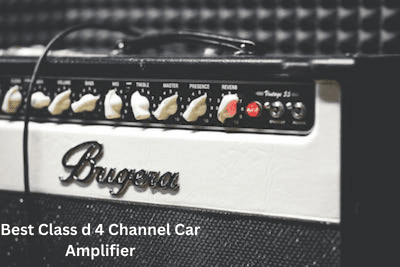Amplifiers use different designs to perform their primary job: to increase the voltage to combine with an audio signal to play over a set of speakers. There are different ways to achieve this, and depending on what you are asking your amp to do, one design may be better for you than another.
Also Check Out: Best Class D 4 Channel Car Amplifier
Amplifier Class Designation
Amplifier class designation refers to how that particular amp combines power and signal. The classes differ on how efficient they are, how much room they take up, how they handle the heat generated by amplification and the fidelity of sound they produce.
Power Ratings; Peak Power and RMS Power
Peak power is what the amp can deliver for a very limited burst of power. It is often the number you will see on the box but it is not very useful. It is better to look at RMS ratings. RMS power is the measure of the amp’s continuous power output.
What about Class D amplifiers, to be specific?
Class D has become the most popular, the most common style of amplifier because they are highly efficient and can be made much smaller, and they produce a lot less heat.
Misconception
One misconception: they are not digital; Class D is not a digital amplifier, it is just another class. They are roughly 90 percent efficient at converting an input voltage into output power, wasting away only about 10 percent as heat, so they can be made much smaller.
Also Check Out: Best 4-Channel Amp For Sound Quality
The uses
They can be fit into smaller nooks and crannies in your car, they can be used on your desktop to power some headphones or some speakers, and because they are so small and so efficient they are used all over the place. Most car amplifiers are now Class D amplifiers. Many home amplifiers are Class D. If you have a portable Bluetooth speaker, there’s a Class D amplifier inside of there powering these speakers, because it’s small and it doesn’t get hot. That is the last thing you want in a Bluetooth speaker. So Class D is the most common, and they sound great. They have come a long way.
What is the history?
At first, Class D amplifiers were only good for powering subwoofers where distortion is not a concern. However, now they are really good enough to be used in very high-end home gear, headphone amps, PA systems, car amplifiers, and pretty much anywhere amplification for audio is needed, you’re probably going to find Class D amplifier options.
The power usage
I have made you wait till the end, but hopefully, it’s worth it.
So, for the class D amplifier’s power usage, it is;
- Power supply voltage – 3.5 V to 5 V
Related Article:
Best Stereo Amplifiers Under 500
What Does An Amplifier in Audio Equipment Exactly Do ?












